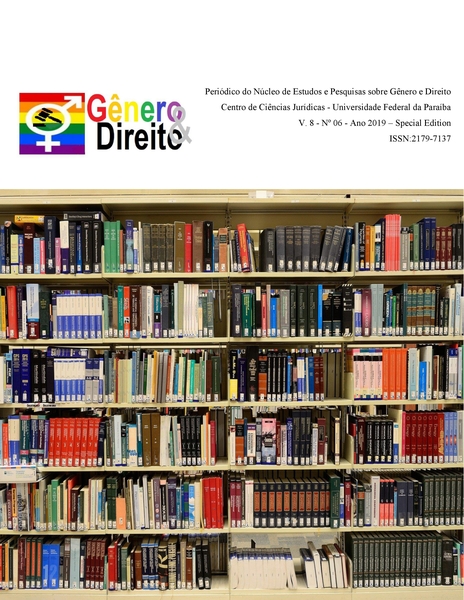PORTFOLIO INVESTMENT ANALYSIS ON THE BASIS OF THE BLACK-LITTERMAN MODEL
DOI:
https://doi.org/10.22478/ufpb.2179-7137.2019v8n6.49297Palavras-chave:
Black-Litterman model, portfolio investment, analysis, uncertainty, risk, profitabilityResumo
The works of Markowitz, Tobin, Sharp in the field of portfolio investment theory are awarded the Nobel Prize in economics. The popularity of these models is explained by their mathematical simplicity and logical harmony. But these models require accurate knowledge of the statistical features of assets and use assumptions about ideal market behavior. A large number of questions immediately arise on how to evaluate the input parameters of these models in the practical use of these models. In the Black-Litterman model, an attempt is made to combine the theory of equilibrium in the capital market with the subjective opinions of analysts regarding the expected return on assets and their relationship to each other. The Black-Litterman model makes it possible to combine the theory of market equilibrium and the subjective opinions of investors about asset behavior in the market. The result is a diversified portfolio with a subjective opinion on the situation. This model is a new word in portfolio theory, which is relatively complex and focused on professionals. Due to the Bayesian approach, it is formed a new, more realistic mixed estimate of expected returns, taking into account the opinions of expert analysts. In Western literature, the Black-Litterman model is recognized as an important and powerful tool in the process of portfolio investment management. In particular, the work discusses in detail the issues of collecting, analyzing and preparing expert opinions. The ability to take into account the expert assessments is the main advantage of this model over all othersDownloads
Não há dados estatísticos.
Referências
Galiev D.R. Using the Black-Litterman model and expert evaluations of a complex nature for the effective management of the securities portfolio. Software implementation and application results in the Russian and American markets // Final Scientific and Educational Conference of Students of the Kazan University in 2010: Collection of Articles / Kazan State University. - Kazan, 2010. – P. 276-278.
Galiev D.R. Fundamental models of financial markets and factor pricing models. Verification of applicability for analysis of the Russian stock market. // Final Scientific and Educational Conference of Students of the Kazan University 2009: Collection of Articles / Kazan State University. - Kazan, 2009. – P. 262-264.
Bevan A., Winkelmann K. Using the Black-Litterman Asset Allocation Model: Three Years of Practical Experience. // Fixed Income Research. – 1998. – No. 6. – P. 7-18.
Black F.A. Global Portfolio Optimization / F.A. Black, R.D. Litterman // Financial Analysts Journal. – 1992. – No. 9. – Р. 28– 43.
Haws J.C., Meyer C.D. Preconditioning KKT Systems // Numerical Linear Algebra with Applications Journal. – 2001. – No. 11. – P. 168-173.
Litterman B.R. Modern Investment Management: An Equilibrium Approach. – Hoboken: «Wiley», 2007. – 626 p.
Mankert C.N. The Black-Litterman Model. – Stockholm: «Royal Institute of Technology», 2007. – 111 p.
Michaud R. The Markowitz Optimization Enigma: Is «Optimized» Optimal? / R Michaud, O. Richard // Financial Analysts Journal. – 1989. – No. 1. – P. 31–42.
Schutel A.S. The Black-Litterman Model For Active Portfolio Management // Journal of portfolio management. – 2009. – No. 11. – P. 18-32.
Walters J. The Black-Litterman Model in Detail / J.Walters // Harvard Management Company. – 2009. – No. 2. – P. 16 – 20.
Galiev D.R., Isavnin A.G., Makhmutov I.I. (2017). Portfolio investment models with asymmetric risk measures and using genetic algorithms // Turkish Online Journal Of Design Art And Communication. Vol.7, Is.. - P.1652-1662.
Makhmutov I.I, Isavnin A.G, Karamyshev A.N,.Sych S.A. (2016). Classification approach in determination of knowledge in context of organization//Academy of Strategic Management Journal. Vol.15, Is.Special Issue. - P.40-46
Galiev D.R. Fundamental models of financial markets and factor pricing models. Verification of applicability for analysis of the Russian stock market. // Final Scientific and Educational Conference of Students of the Kazan University 2009: Collection of Articles / Kazan State University. - Kazan, 2009. – P. 262-264.
Bevan A., Winkelmann K. Using the Black-Litterman Asset Allocation Model: Three Years of Practical Experience. // Fixed Income Research. – 1998. – No. 6. – P. 7-18.
Black F.A. Global Portfolio Optimization / F.A. Black, R.D. Litterman // Financial Analysts Journal. – 1992. – No. 9. – Р. 28– 43.
Haws J.C., Meyer C.D. Preconditioning KKT Systems // Numerical Linear Algebra with Applications Journal. – 2001. – No. 11. – P. 168-173.
Litterman B.R. Modern Investment Management: An Equilibrium Approach. – Hoboken: «Wiley», 2007. – 626 p.
Mankert C.N. The Black-Litterman Model. – Stockholm: «Royal Institute of Technology», 2007. – 111 p.
Michaud R. The Markowitz Optimization Enigma: Is «Optimized» Optimal? / R Michaud, O. Richard // Financial Analysts Journal. – 1989. – No. 1. – P. 31–42.
Schutel A.S. The Black-Litterman Model For Active Portfolio Management // Journal of portfolio management. – 2009. – No. 11. – P. 18-32.
Walters J. The Black-Litterman Model in Detail / J.Walters // Harvard Management Company. – 2009. – No. 2. – P. 16 – 20.
Galiev D.R., Isavnin A.G., Makhmutov I.I. (2017). Portfolio investment models with asymmetric risk measures and using genetic algorithms // Turkish Online Journal Of Design Art And Communication. Vol.7, Is.. - P.1652-1662.
Makhmutov I.I, Isavnin A.G, Karamyshev A.N,.Sych S.A. (2016). Classification approach in determination of knowledge in context of organization//Academy of Strategic Management Journal. Vol.15, Is.Special Issue. - P.40-46
Downloads
Publicado
2019-11-26
Como Citar
G. ISAVNIN, A. .; R. GALIEV, D. .; N. KARAMYSHEV, A. .; I. MAKHMUTOV, I. . PORTFOLIO INVESTMENT ANALYSIS ON THE BASIS OF THE BLACK-LITTERMAN MODEL. Gênero & Direito, [S. l.], v. 8, n. 6, 2019. DOI: 10.22478/ufpb.2179-7137.2019v8n6.49297. Disponível em: https://periodicos.ufpb.br/ojs/index.php/ged/article/view/49297. Acesso em: 13 abr. 2025.
Edição
Seção
Seção Livre

